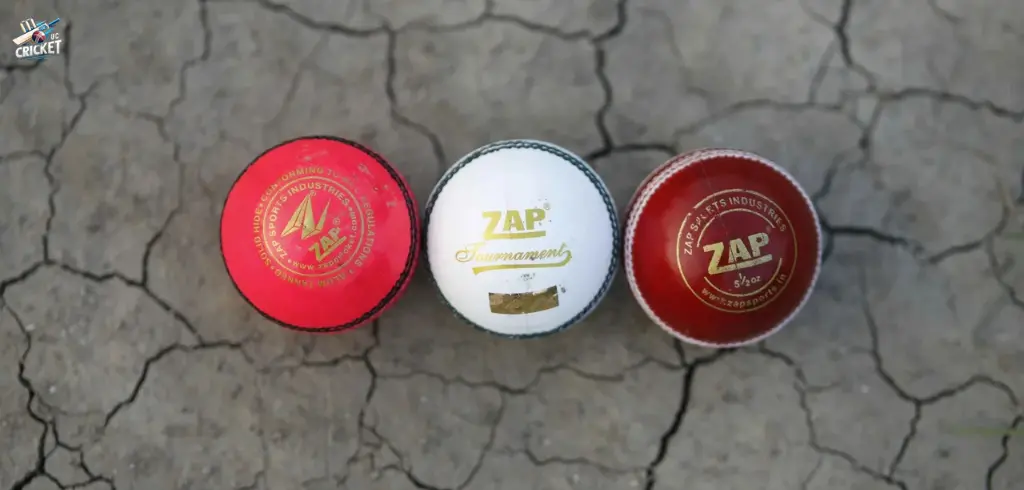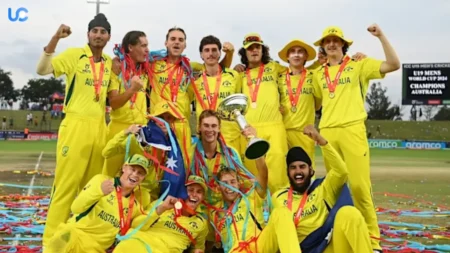There are various formats of cricket such as Test games, One-Day Internationals (ODIs), and Twenty20 (T20) games. Consequently, the type of ball used also differs. The red balls are used in day-time test matches, while white ones are common in ODIs and T20s and there exist pink balls which are manufactured specifically for day/night play-offs at test level. Each color has its own reason behind selection, with each ball responding differently while in play. Let us see how each ball behaves and why the pink ball is significant in contemporary cricket.
Why Does the Colour of The Ball Differ?
The color of the ball depends on when and how the game is played:
- Red Ball: Used in traditional Test matches that happen during the day so that players can see it clearly in sunlight.
- White Ball: Chosen for ODIs and T20, which are mostly evening games. It is easy to locate white balls under lights in stadiums as well as on TV since they appear bright.
- Pink Ball: Developed specifically for day/night Test matches where play commences under sunlight but extends into night time. Even at sundown, the pink color is still visible.
Read Also:- Cricket Pitch Length: Dimensions and Measurements
Quick Comparison of Pink, Red, and White Balls
| Feature | Red Ball | White Ball | Pink Ball |
|---|---|---|---|
| Used In | Daytime Test Matches | ODIs, T20s | Day/Night Test Matches |
| Seam | White stitching, easy to grip | Smooth, synthetic seam | Black stitching for visibility |
| Shine and Finish | Wax coating, traditional look | Extra polish for brightness | Special coating to stay bright |
| Swing | Good swing over time | Early swing, fades quickly | Swings early, keeps movement longer |
| Pros | Great for daylight, good for grip | High visibility at night | Visible under lights, swings well |
| Cons | Hard to see under stadium lights | Wears out quickly | Newer in cricket, not as bright as white ball |
Read Also:- Pink Ball is Used in Test Cricket
How the Balls Differ in Detail
1. When They are Used
- Red Ball: Mostly used during lengthy daylight Test matches because there is enough light to see it properly.
- White Ball: Best suited for short contests like ODIs and T20s, which mostly happen at nightfall when stadium lights make it visible.
- Pink Ball: Meant for day/night Test matches that commence in the afternoon before it turns dark later on. The pink shade makes it easier for players and fans following the match to see as the sun goes down.
2. Seam and Stitching
- Red Ball: Has white stitching which contrasts well with the red color; helps bowlers get a grip on what direction they want the ball to move.
- White Ball: An artificial seam helps in durability; the gameplay speed is well adjusted using this kind of ball.
- Pink Ball: The sewing line for this particular piece is usually made from darker materials, such as blacks or other dark colors, making it possible for proper visibility beneath stadium lights. In addition, bowlers can use such lines to make variations after dark periods.
3. Shine and Finish
- Red Ball: It comes with wax still covering it, allowing bowlers’ hands to hold onto it, but it often fades eventually, aiding reverse swings (when the ball moves unexpectedly).
- White Ball: Remains bright for a little time after polishing but then gets dull quickly compared to others, hence frequent changing in ODIs and T20s.
- Pink Ball: Maintains a PU coating that is specific to it, thus shining much longer unlike others whose lifespan may not exceed the evening sessions. This helps it stay visible under LED lamps.
4. Swing and Movement
- Red Ball: Swings moderately in the air, moving in curves, and can produce reverse swing as it gets old, mostly at the end of the match.
- White Ball: Starts with a lot of pronounced swing that, however, stops very quickly. This factor comes into play especially in shorter formats where quick, dynamic displacements are important.
- Pink Ball: Shows even more significant tendencies of swinging than red balls initially, giving bowlers a competitive advantage in late evening hours. Its unique varnish contributes to lighter weight and greater swing in comparison with white ones throughout the over.
Pros and Cons of Every Type
- Red Ball: Perfect for daytime games, giving bowlers proper handling, but it turns into a brownish color at night.
- White Ball: Ideal for night play, as seen in ODIs and T20s, but its lifespan is shorter compared to other hues.
- Pink Ball: Remains visible throughout twilight hours and has a longer-lasting gloss than any other type, making it easier to follow what happens on the ground. However, some players have not fully embraced it yet in Test Cricket, citing inexperience.
Read Also:- HotSpot Technology in Cricket
Conclusion
Each cricket ball – red, white or pink – has its own role that enables players to perform better depending on the format of the match as well as the light. The pink ball has combined some of the characters from both the red and white balls enabling it to be visible during day/night test matches and to swing for bowlers.
It is no surprise, therefore, that the pink ball has come out strongly branching out to allow test matches be played in the evening, a move that will keep this game enjoyable for fans who would have otherwise missed matches after leaving their workplaces or schools. This way keeping cricket on toes is the best way to go!




